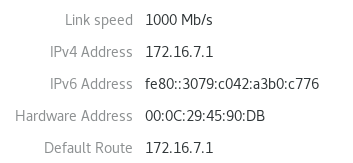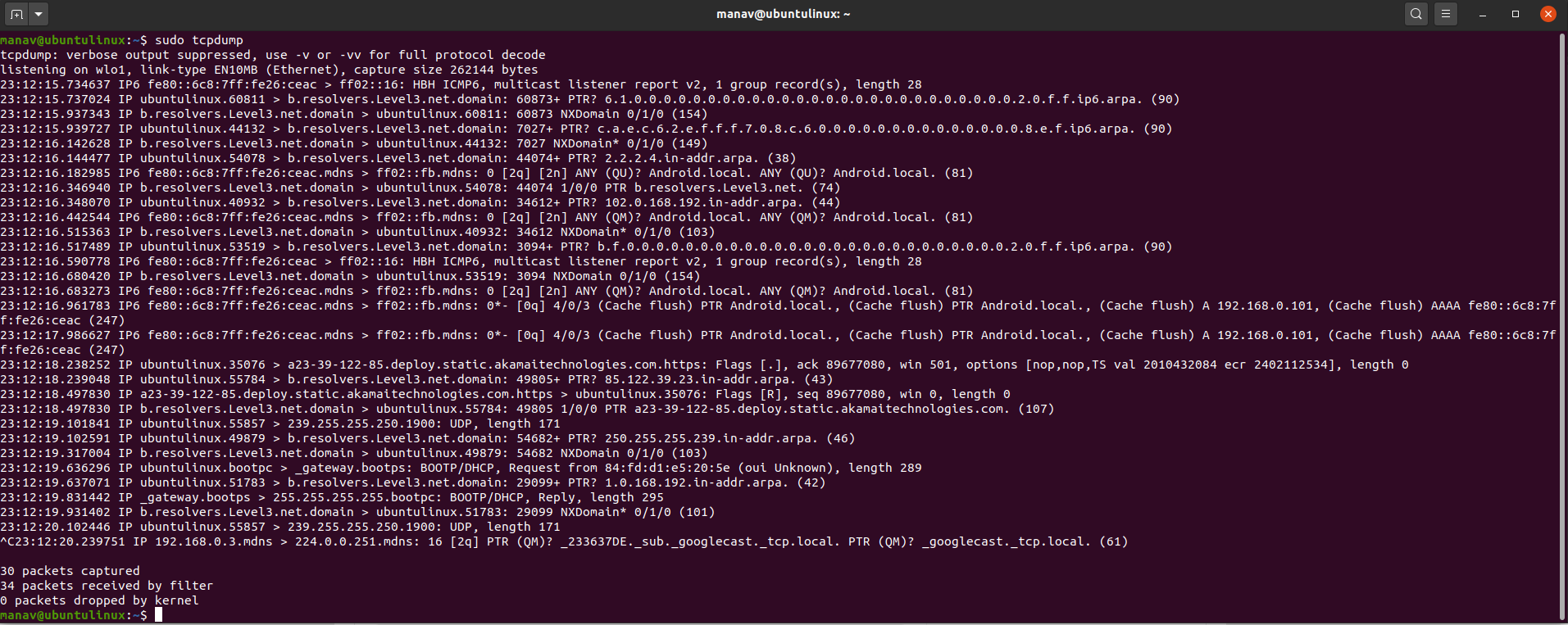

#YUM INSTALL TCPDUMP ARCHIVE#
The deb of tcpdump from the Ubuntu archive as a snap. This snap is not maintained by and instead packages You can use this tool to trackĭown network problems, to detect attacks or to monitor network activities. It can be used to print out the headers of packets on a network interface,įilter packets that match a certain expression. IGMP, SMB, OSPF, NFS and many other packet types. tcpdump is able toĮxamine IPv4, ICMPv4, IPv6, ICMPv6, UDP, TCP, SNMP, AFS BGP, RIP, PIM, DVMRP, In this example, only IP packets that are coming from or going to UDP port 1812 are captured.This program allows you to dump the traffic on a network.

Packets that do not verify the condition following the -f flag will not be captured. The -f flag is used to specify a network capture filter (more on filters later). If you want to capture the packets coming from/going to UDP port 1812 on eth0, you can use tshark command as follows: $ tshark -f "tcp port 80" -i eth0 -w capture.cap On Ubuntu, you can install it with the command: $ sudo apt install tshark Using Tshark Tshark is automatically on CentOS 7 when you install wireshark. It will use the pcap library to capture traffic from the first available network interface and displays a summary line on stdout for each received packet. TShark is a command line tool that comes along with Wireshark to capture live traffic as well as read and parse capture files. Without any options set, TShark will work much like tcpdump. Installing from source will require you to compile the source code. Once the requirements are met, run the following commands in the terminal to install the source code. Or if you prefer the GTK+ interface, use this command: $ sudo pacman -S wireshark-gtk Installing from Source In the terminal, type the following commands: $ sudo pacman -S wireshark-qt Launch it from the launcher or type the following command in the command line: $ wireshark Installing on Arch Linux $ sudo yum install wireshark wireshark-qt wireshark-gnome In the terminal, type the following commands: $ yum install gcc gcc-c++ bison flex libpcap-devel qt-devel gtk3-devel rpm-build libtool c-ares-devel qt5-qtbase-devel qt5-qtmultimedia-devel qt5-linguist desktop-file-utils We will install Wireshark on CentOS 7 using yum. You can launch it from dash or type the command: $ wireshark Installing on CentOS 7 Press the left arrow key on your keyboard to select and hit Enter. $ sudo add-apt-repository ppa:wireshark-dev/stableĭuring the installation, if you're asked if non-superusers be able to capture packets. Once all the dependencies have been installed, we run the following in the terminal. Installing on Ubuntu 16.04īefore we begin installation, let's meet the dependencies: $ sudo apt-get install build-essential checkinstall libcurl4-openssl-dev bison flex qt5-default qttools5-dev libssl-dev libgtk-3-dev libpcap-d

In this tutorial, we will go through the installation of Wireshark on Ubuntu 16.04, CentOS 7, and Arch Linux. Wireshark and tcpdump use libpcap to get live network data. It’s often more easy to capture packets using tcpdump command and view using Wireshark. This is useful for troubleshooting the network or network security issues and to debug protocol implementations. It is used to capture network packets and display the details of the packet data. Wireshark is one of the best open source network GUI packet analyzer available today.


 0 kommentar(er)
0 kommentar(er)
